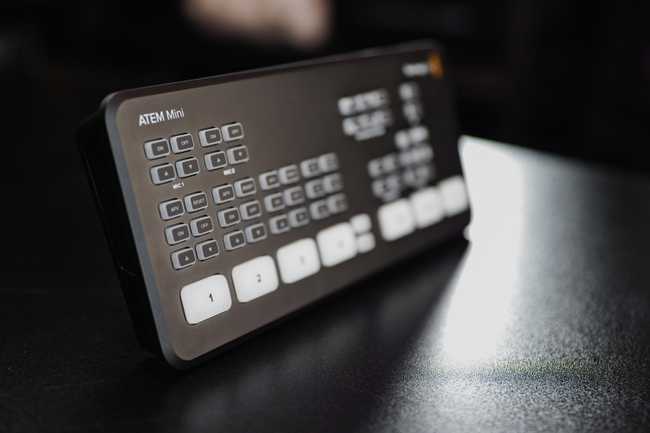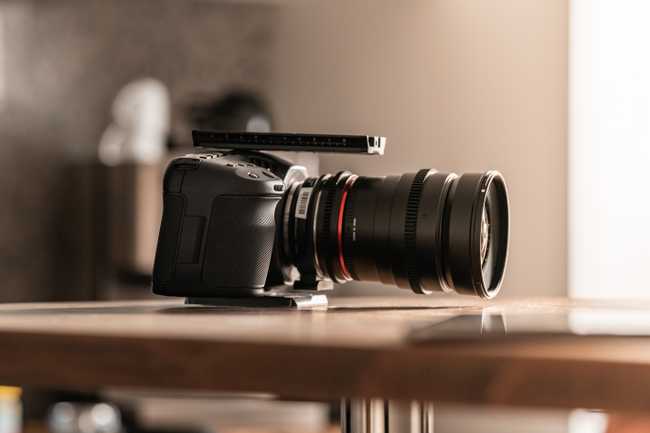A Complete Guide to Theatre Streaming Equipment
Wednesday, December 16, 2020
Lately, many people have been asking me how theatres can stream their shows to ticket buyers and what equipment is needed to do this well. To help these people (and myself), I've put together this list for reference.
Like so many people who work in the entertainment industry, over the past eight months, I've worked on all aspects of a streaming production: in front of the camera as an actor, directing actors for the camera, controlling the cameras themselves, and managing the delivery of streaming or recorded content to patrons.
Streaming theatre productions is unique: for the most part, we're working in spaces that have state-of-the-art lighting systems and audio equipment. This list is intended for community or professional theatre companies that are working in a space that already has that equipment.
Here are my recommendations for streaming equipment for theatre companies.
Alternatives
You don't need to get any expensive equipment. If the theatre company or group you're working with can only afford to use an iPhone to record, then that will work perfectly! A newer iPhone's quality may be better than a lot of the prosumer equipment out there.
For the first level up from a single stationary phone, I recommend checking out NDI. With a tiny budget and no camera operators, you could set up several phones running the NDI camera app throughout a theatre. Then, using NDI's technical wizardry and a program like OBS, you can add all those cameras as sources and cut between them to produce a pretty slick streaming production.
Equipment
If you have a budget to spend, here are my equipment recommendations.
Note: all prices are listed in CAD.
Production Switcher
Your most important piece of equipment, and to my mind, there is only one option in this category:

BlackMagic ATEM Mini production switcher - $435 for the base model - $1,030 for the Pro version
I love the BlackMagic ATEM line and can't recommend it highly enough.
With this little gadget, you can connect up to four cameras at once via an HDMI cable, along with two additional audio sources via 3.5mm jacks. It will even let you output all of that to a monitor with a multiview layout that will make switching cameras and graphics a breeze.
The built-in fade, cut, and wipe effects make it easy to create seamless presentations on the fly, and the included ATEM Software Control will allow you to overlay graphics, create cool picture-in-picture effects, add a green screen key, and more!
One thing that I've found useful is that it will also connect directly to any computer via a USB-C cable and, once connected, it will register as a webcam. That means you can use the live output of the ATEM in Zoom, Google Hangouts, Youtube Live, Facebook Live, Twitch, or any streaming platform.
I've even connected the audio output of an iMac running QLab. That means you can playback show audio for the livestream through the ATEM and have a single operator run it all from one computer!

Cameras
Which camera to choose is dependent on your ultimate price range. No matter what the price, however, you will want to get a camera that will work well in low light situations. Nothing is worse than losing all the beautiful work your lighting designer has done by using a camera that can't pick up the subtle differences in light. That means paying attention to the f-stop of the camera lens (lower is better) is going to be very important!
Keeping in mind that you will want to have at least two and up to four of these cameras, here are my recommendations:
BlackMagic Pocket Cinema Camera 4K - $2,059 for the body only + approximately $400 - $1,200 for a good lens
The BlackMagic Pocket Cinema Camera is the most expensive camera I will recommend, but also the best. This camera has phenomenal quality and shoots in 4K, or if you want to upgrade for about $1,000 more, 6K resolution. It also features a dual gain ISO, which will boost your low light shots and make your lighting designer happy.
Shooting in 4K and streaming in 1080p will give you the unique ability to have more "shots" within a single shot, just by cropping your image.
Amazingly, when paired with your BlackMagic ATEM Mini, you can control the camera from the ATEM Software Control, including focus, zoom, ISO, and more. That means you could have one super-human operator control the entire production!
Plus, this camera has an EF mount for its lenses, which means that if you have an old DSLR sitting around like I do, it's lenses are likely compatible with this camera.
Canon XA40 Pro UHD 4K - $1,999
If you anticipate that you will need active camera operators or have the budget available, this is an excellent professional camcorder.
Sony Alpha A6400 Mirrorless Camera - $1,348 for the body only + approximately $400 for a reasonably priced lens
Paired with a low f-stop lens in the 1.4-2.4 range, this is a perfect camera for streaming that won't require too much camera operation.
You will get a crisp, clear picture in 4K with fantastic auto-focus capability. You can also connect a microphone via the built-in mic jack and use the 180-degree tilting LCD screen to monitor your video. Most importantly, this camera has a "clean" HDMI output, which means that it will send a live signal without any of the onscreen info displayed on the LCD screen.
Panasonic HC-V770K HD Camera - $700
The Panasonic HC-V770K is a great little camcorder. The lens is perfect for shooting in low light at a wide-angle, but you will want to be careful not to zoom in too far as it will go up to an unsuitable f4.08 when fully zoomed in.
Zoom Q2N - $299
At the low end, these Zoom Q2N cameras perform decently well in medium to high light situations. However, I have found that they are quite grainy in very low light and even in the black areas of a well-lit shot. But, if you only have a limited budget, they are a great little camera with fantastic audio for the price.
Audio
If you are shooting in a traditional theatre environment, you will likely have a lot of this equipment already. Most of your existing microphones should be compatible with your new streaming equipment by connecting to the ATEM Mini via a 3.5mm jack.
I would recommend giving actors lavalier microphones or making use of area mics. If you need to pick up some of this equipment, I recommend:
Rode Wireless Go Transmitter and Receiver - $280
This transmitter and receiver pair is fantastic for short to medium range operation and allows you to clip in any lavalier or headset microphone. It also features a rechargeable battery with up to 7 hours of operation.
Rode smartLav+ - $109
The Rode smartLav+ is a high-quality omnidirectional mic with excellent sound when connected to the Rode packs above or to a smartphone.
Note that this system will not work if you want to use it for a full-scale production with many actors on stage. There are better and optimized systems for that.
Accessories
There are a few necessary accessories to pick up, including tripods, HDMI range extenders, and miscellaneous cables.
Velbon Videomate - $197
I've been using my Velbon tripod for over a decade now. I've lugged it up mountains and through forests, and aside from some small wear and tear, it's still going strong.
HDMI Range Extender - $49
These little boxes combined with a CAT 6 ethernet cable ($25 CAD) will let you get your cameras right up close to the action while allowing your production switcher and control to be in a booth up to 200 ft away.
HDMI Cables - $10 - $25
Depending on which cameras you decide to use, you will need an HDMI cable to run from the camera into your range extender. Note that there is a difference between Mini HDMI and Micro HDMI!
HDMI Splitter 1 in 4 Out - $22
If you want to allow multiple monitors to watch the live multiview output from your ATEM (for example, for a stage manager and a production table), then one of these little boxes will do the trick.
Netgear 5-Port Gigabit Ethernet Switcher - $23
A network switchers will allow you to hardwire your computer and your ATEM Mini into the same network (which you should definitely do!) with a single port. This means that you can connect to the ATEM Software Control over your network and allows you to use a Stream Deck.
Elgato Stream Deck - $199
The Stream Deck is awesome for a lot of reasons, but for our purposes, the main use case is that it will allow you to control macros in the ATEM Software Control at the touch of a button. This opens up a whole new world of possibilities, including picture in picture effects, green screen keying, media background, audio effects, and much more. It's possible to run macros without the Stream Deck, but this just makes it so much simpler when you are also trying to use other show control software like QLab at the same time!
Conclusion
When it comes to livestreaming your theatre production, having the right equipment for streaming is essential. With a combination of the recommendations above, you will be able to produce a beautiful, fully-realized livestream of your production for as little as $1,000, or the incredible multi-camera setup of your dreams for as much as $15,000.
And, of course, the sky is the limit. If you have an even larger budget to spend, there are higher-end cameras, larger production switchers, and much more to bring an even more professional look and feel to your productions. But you would be amazed at the quality achievable with just a couple iPhones and some creativity.
I can't wait to see what you create!